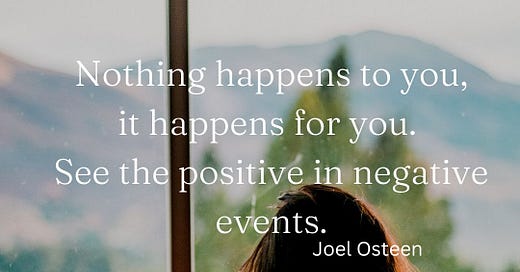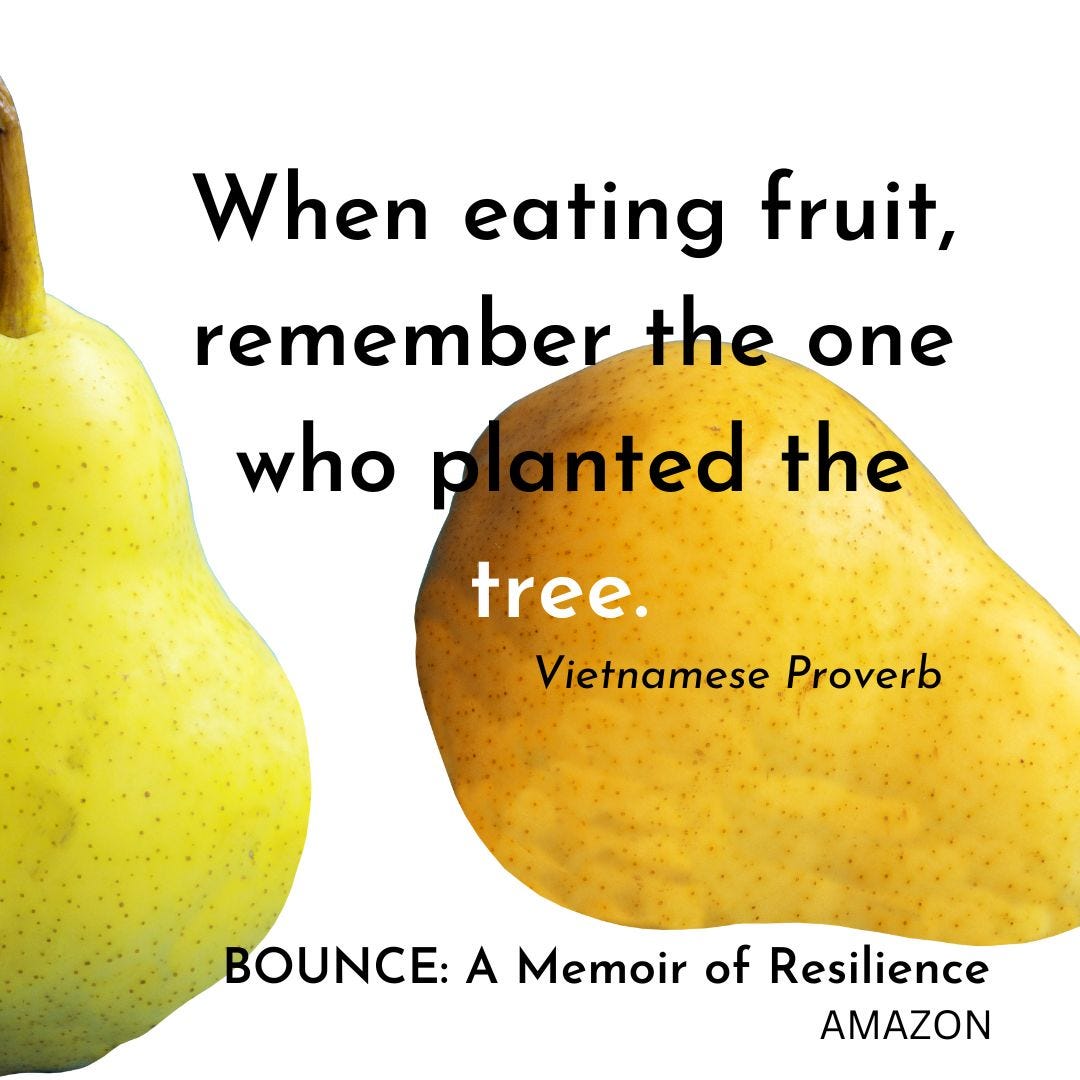I talk about this a lot with my sons, both of whom are young adults going through the ups and downs all of us go through (although they seem to think it's just them, lol).
But I get it. They're young. It takes time and life experience to learn to see the positive in negative situations.
Like, when we don't get ...
approved for the mortgage
promoted
the client
the interview
the part
We have every right to feel and be disappointed. But we also have the responsibility to take a close look at what we didn't get, at what didn't happen, and think hard about it.
We need to ask ourselves:
Could we really have handled the mortgage? Or might it be better to wait a bit until our financial situation improves and figure out what can we do to make that happen?
What could we have done more of or better to get the promotion, and why didn't we do it when there was time? Is it possible that, deep down inside, we know the culture isn't a good fit for us and maybe it's time to explore other places to work? Places that align with our values, places we'd be better able to contribute?
Seeing the positive in the negative requires really being willing to look. And then it requires consideration and action. (Like researching companies we’d like to work for. Updating our resume. Or making a budget and financial plan that helps put the goal of home ownership within reach.)
Sure, it would be so easy to say "Ah, the hell with it." But the situation didn't happen to you. It happened for you.
Find out why.
The answer is for you alone. And in the process of reflecting, of finding the positive in the negative, we build resilience.
But you knew I was going to say that.
Some things to consider in the week ahead
If you’ve been with me and Building Resilience for a while, you know I believe in approaching resilience like a muscle — like our biceps or pecs. Only unlike our biceps and pecs, our resilience muscle can be exercised every day. That doesn’t mean you need to go through something awful or trying, but there are practices you can adopt that help build resilience. No suffering required.
Gratitude
The above quote, “When eating fruit, remember the one who planted the tree” is the perfect example of gratitude. And I have to tell you, when I first read it I felt terrible. Never in my life have I stopped and remembered — never mind thanked — the person who planted the pear or cherry tree whose fruit I was enjoying. Didn’t even cross my mind. And I consider myself to be a serious gratitude practitioner. That quote kicked me in the pants. It reminded me that there is always, always, something or someone in every situation to be grateful for. I hope you’ll bear this quote in mind this coming week and allow it to expand your gratitude practice. I promise: the more we are grateful, the more we have to be grateful for.
Mindfulness
In addition to gratitude, practicing mindfulness via meditation and/or prayer is proven to help build resilience. When we sit silently and do our best to quiet our thoughts (even if we can only manage to do so 30 seconds at a time), we create space for other, better, healthier thoughts to come to us. Sure, those thoughts are fleeting, but in those 30 or 45 seconds of quiet, we can and do hear them and many times they surprise us with a new perception of a situation or relationship that’s a real game changer.
Movement
Walk. Run. Try yoga. Set a timer so that every 60-90 minutes you’re reminded to get up and walk or vacuum or lift weights for 10 minutes. Movement shakes off the cobwebs and boosts our brain power by boosting our endorphins. And that can result in our seeing opportunities where we might only have seen adversity. Talk about building resilience.
Podcast: Isn’t She Amazing? This new podcast and YouTube channel is hosted by Marianne Clyde and Lorna Magill. Both women are terrific interviewers with tons of energy (and courage — watch them jump out of a perfectly good airplane here and here!). I got together with them recently to talk about resilience and the importance of humor in the grieving process. I hope you’ll tune in and subscribe.
Steve Longi, Longitude Entertainment. Steve is one of those people who defines resilience. He was a kid from a small town in New Jersey who had a big dream: To go to Hollywood and make movies. He endured crappy apartments and even crappier jobs. He was rejected left and right. But he didn’t quit. At this point, he’s produced the Academy Award-winning film Hacksaw Ridge, and the Emmy-nominated Prayers for Bobby and, as he says, he’s living his dream.







